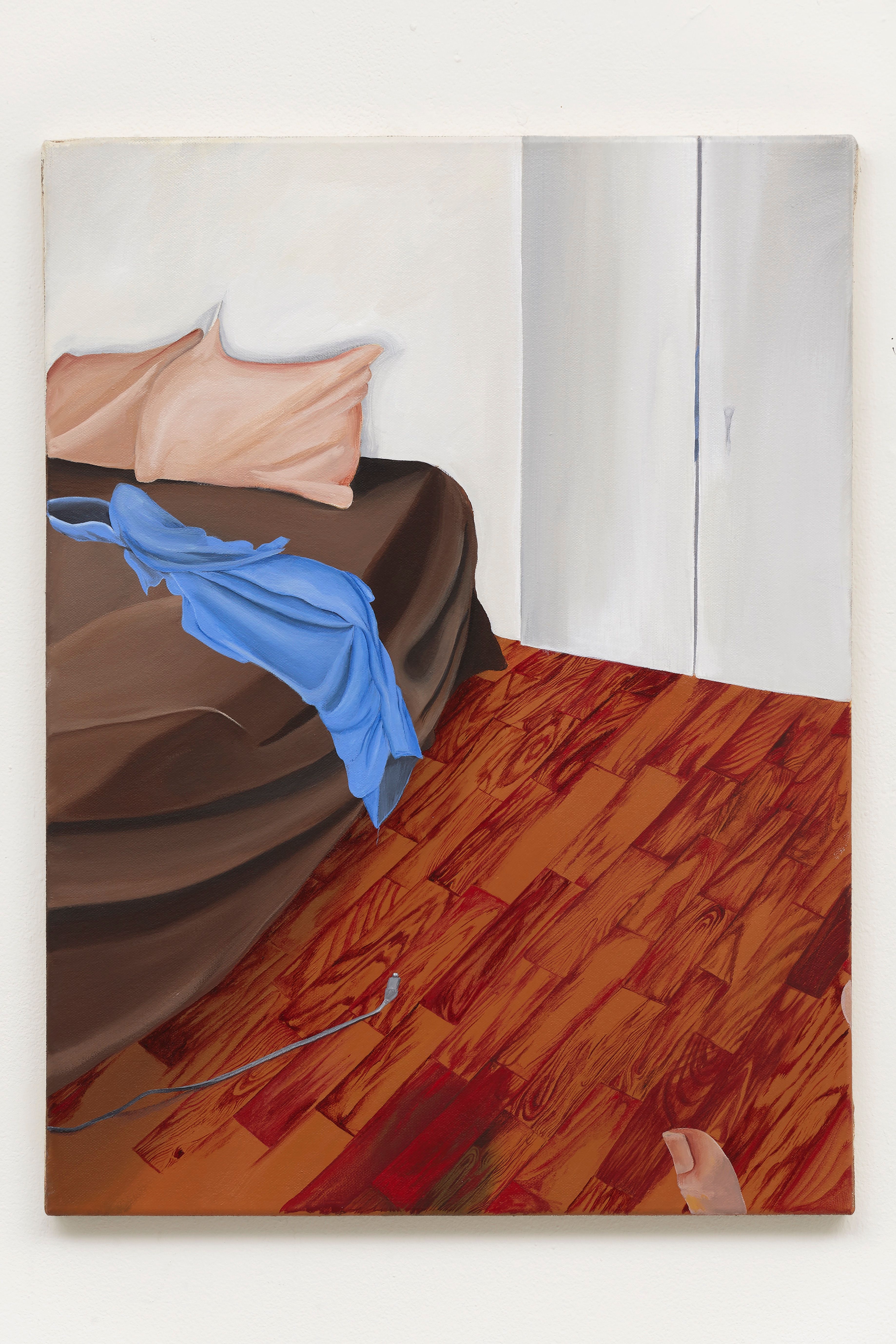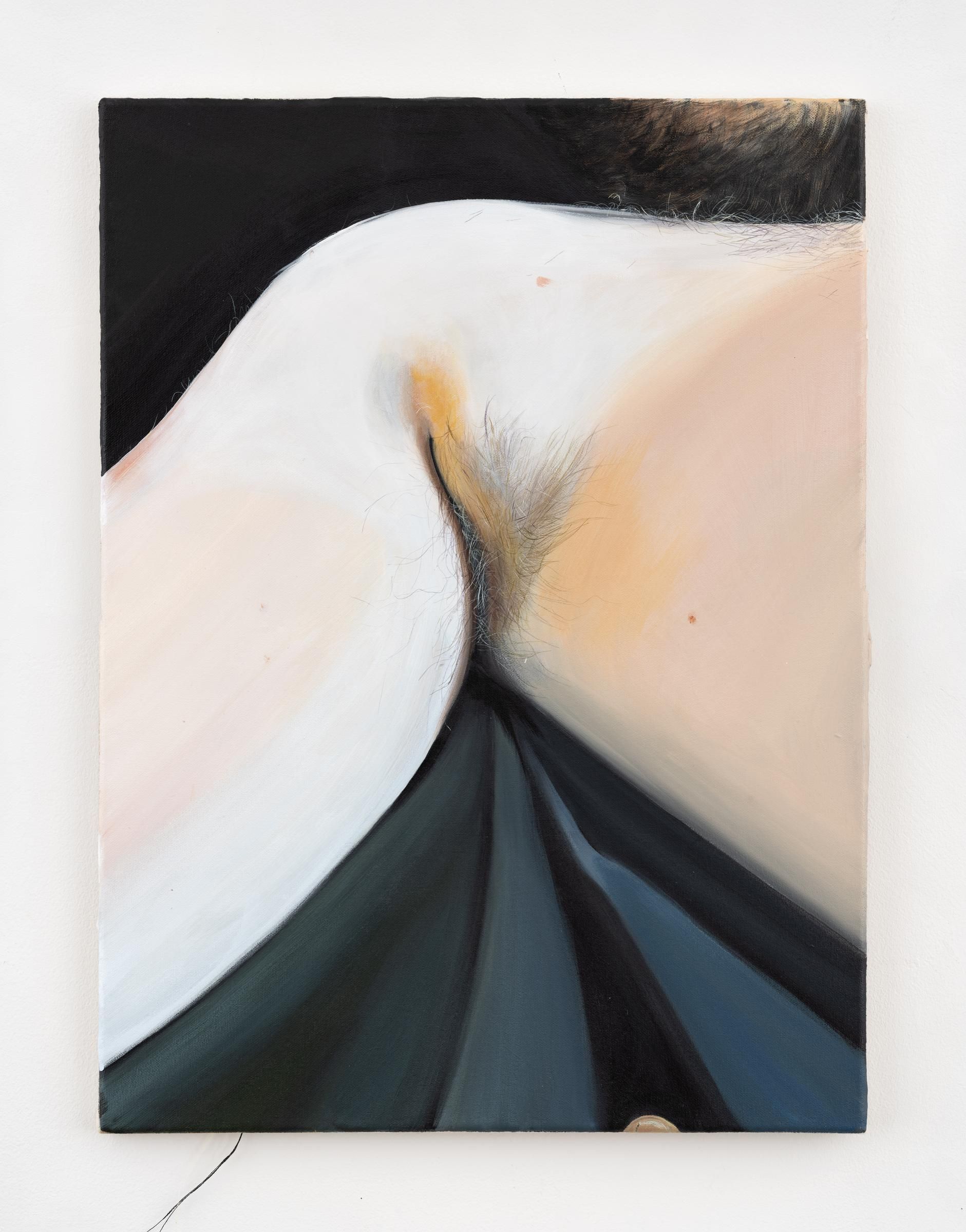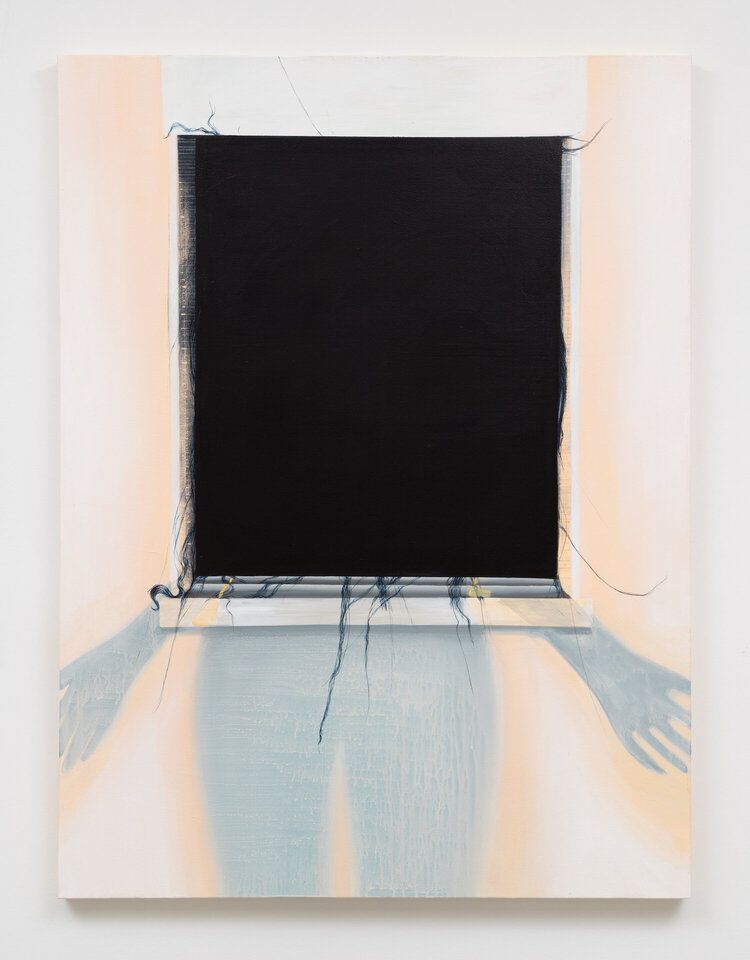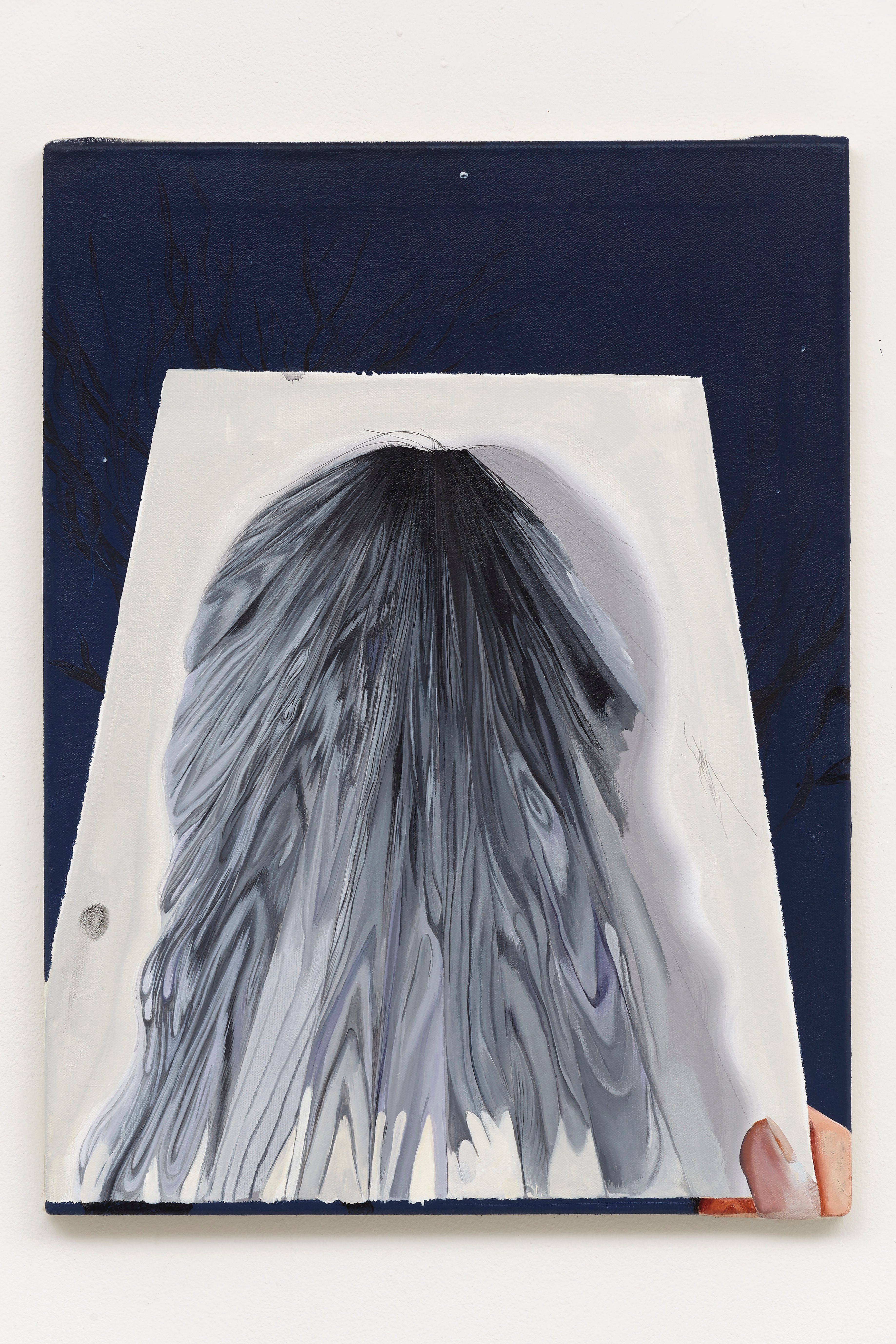/ Cabin Fever / Michelle Song
Cabin Fever
Michelle Song
Sep 15, 2022
Sara Rahmanian’s paintings feature fragments of human bodies like hair, appendages, and orifices that appear alongside crevices of domestic fixtures like sinkholes, quoins, and the corners of furniture. In these paintings, an intimate play emerges between the self and its shadow. One can often discern fragments of the body and household objects in the ample blank spaces on Rahmanian’s canvases.

Untitled, acrylic on canvas, 24x18, 2021.
Growing up with artistic and cultural influences in her family, Rahmanian began her arts education at the age of 14. She excelled in figurative drawing, thanks to a natural sensibility to capture moments like a journalist. Despite being an ostensible prodigy in painting—she won a UNESCO prize in painting at three years old—she was assiduous in learning colors and techniques in painting classes. The artist recalls Andy Warhol's and David Hockney's canonization during her art education in Iran. It wasn’t until she arrived in the US that she realized the influence of Hockney-esque palettes in her works. “The moment of immigration allows you to watch yourself from another angle,” the artist reflected. Upon resuming her art practices in the US, the process of unlearning has allowed the artist to develop a refreshing palette of her own. In her new series, bright colors reminiscent of sunset abound--a palette that the artist described as “contrasting symbiosis.”

Delicious, acrylic on canvas, 24x18in, 2022.
In Rahmanian’s paintings, objects and figures play hide and seek with the viewers. In an almost intentionally myopic fashion, the artist magnifies the nooks and crannies of everyday objects and quotidian scenes in a such closeness that they abstract scale and perspective. The mundane and the uncanny trigger a feeling of cabin fever symptomatic of the pandemic experience shared by many. The lockdown was a reality of limitation that compelled the artist to think about paintings philosophically. Less preoccupied with images as such, her canvases leave ample blank spaces for the dramaturgy of suspension.

Night, acrylic on canvas, 48x36 inches, 2021.
One may discern the painter’s penchant for introspection through the soft shadows and silhouettes of human figures. Occasionally, a hand, a foot, a heel, or fingers peer tentatively through the canvases as if estranged from the body's integrity. Another recurring motif is what appears to be shed hair painted with dark, warped lines. The abject is evoked through what the body sheds away, resonating with Julia Kristeva’s notion of the abject as what lies between the subject and that which the subject has rejected. These bodily fragments and discards intimate the artist’s imagination of the relationship between herself and her alter ego--a part of her that was severed and left behind upon the experience of migration.
Through her uniquely askew composition and peculiar hues, Rahmanian injects her humor and playfulness in conditions of severance, isolation & limitation.
